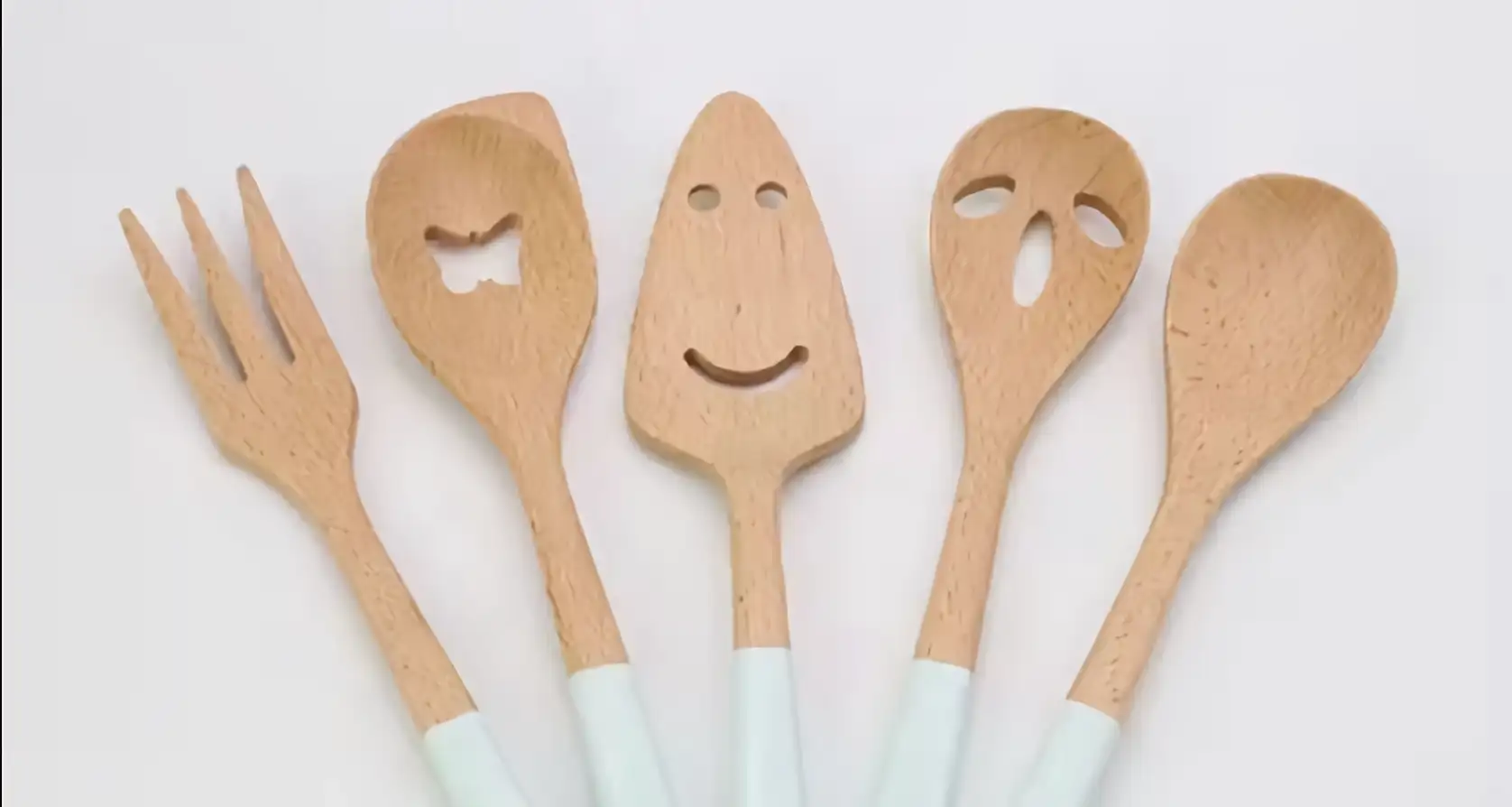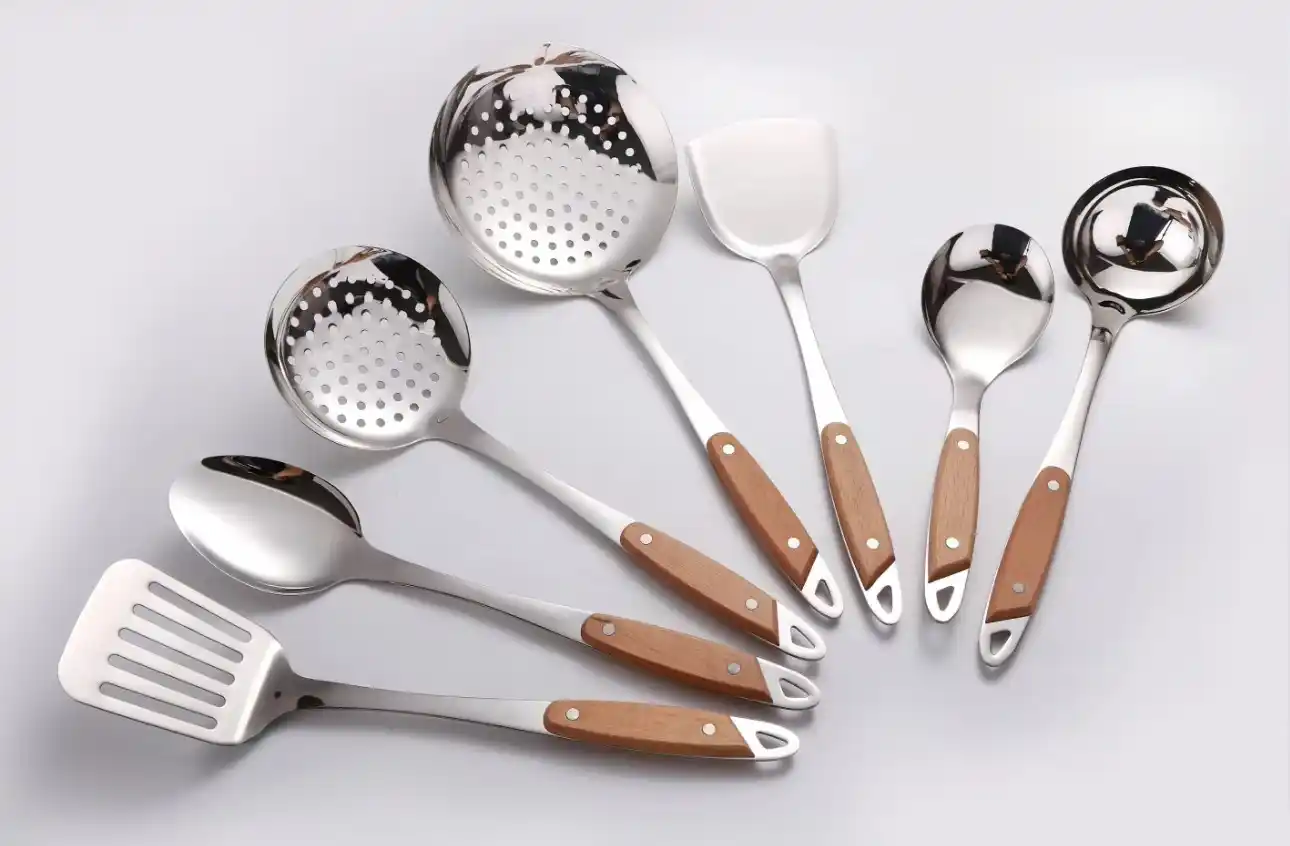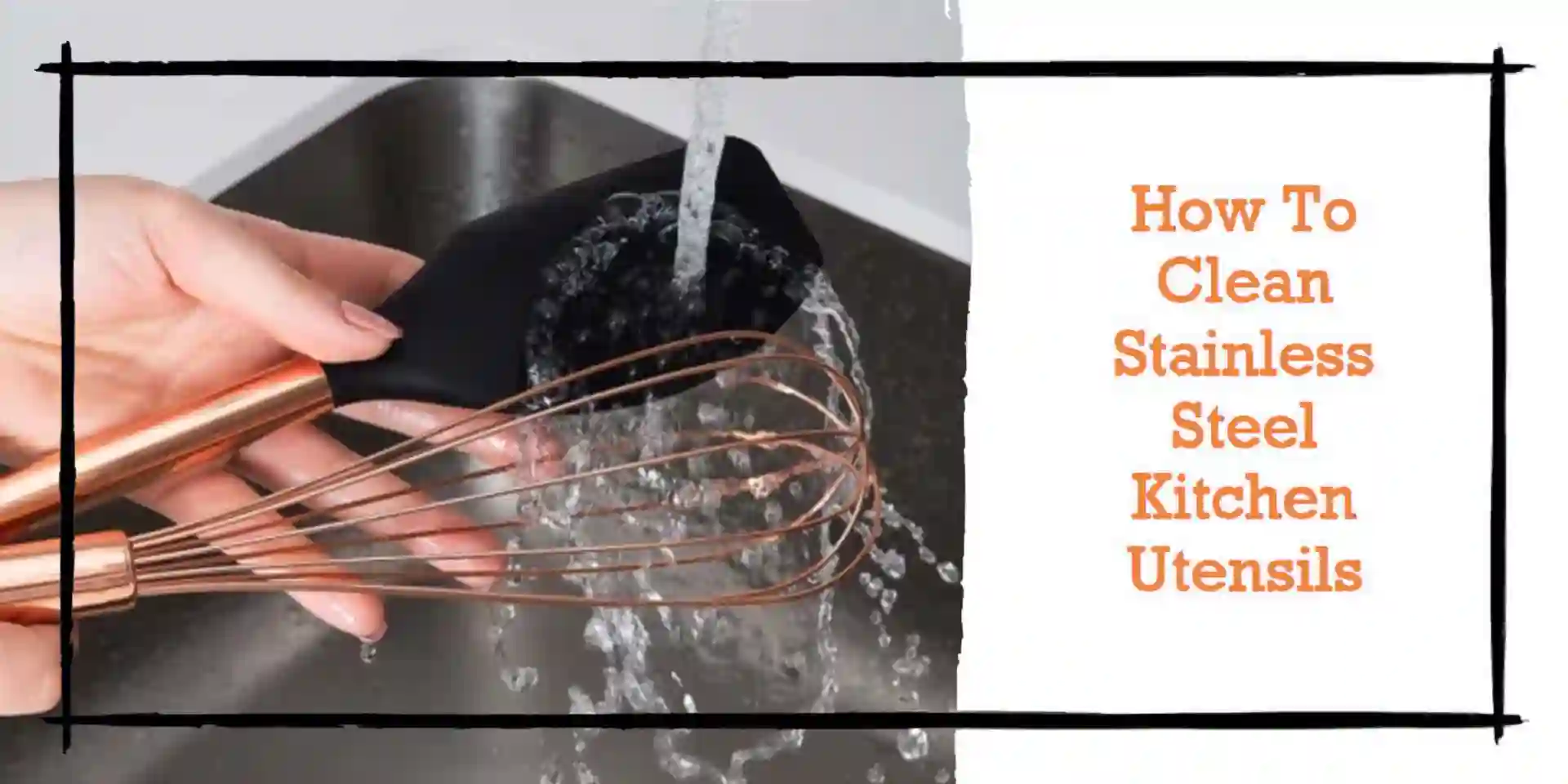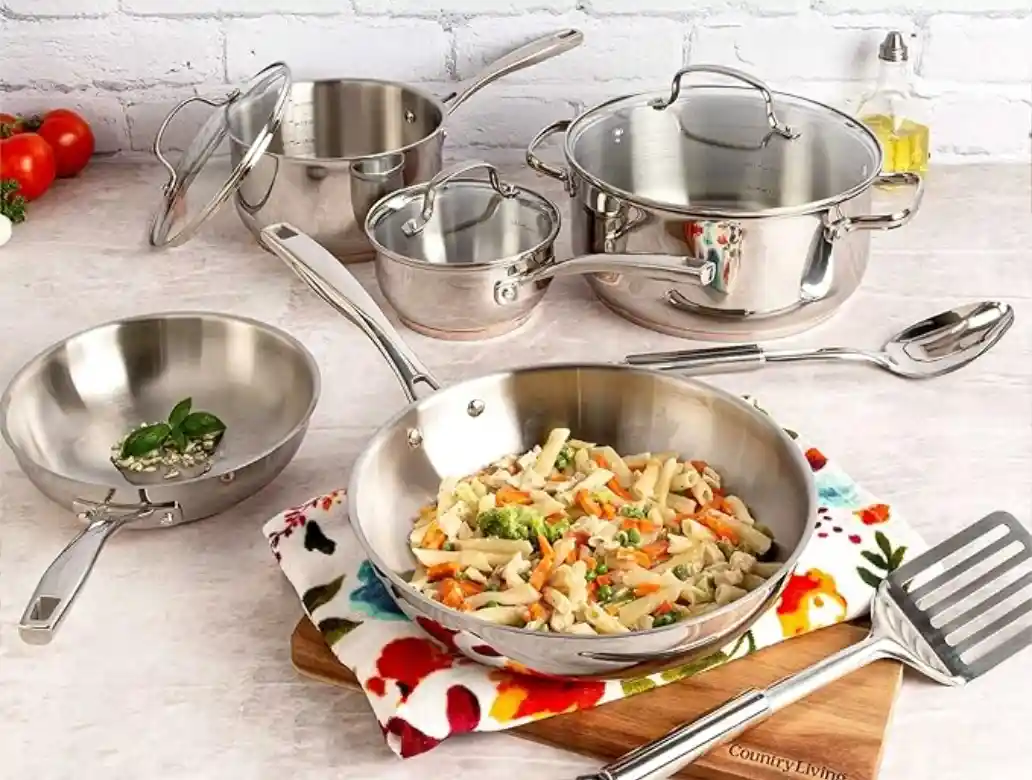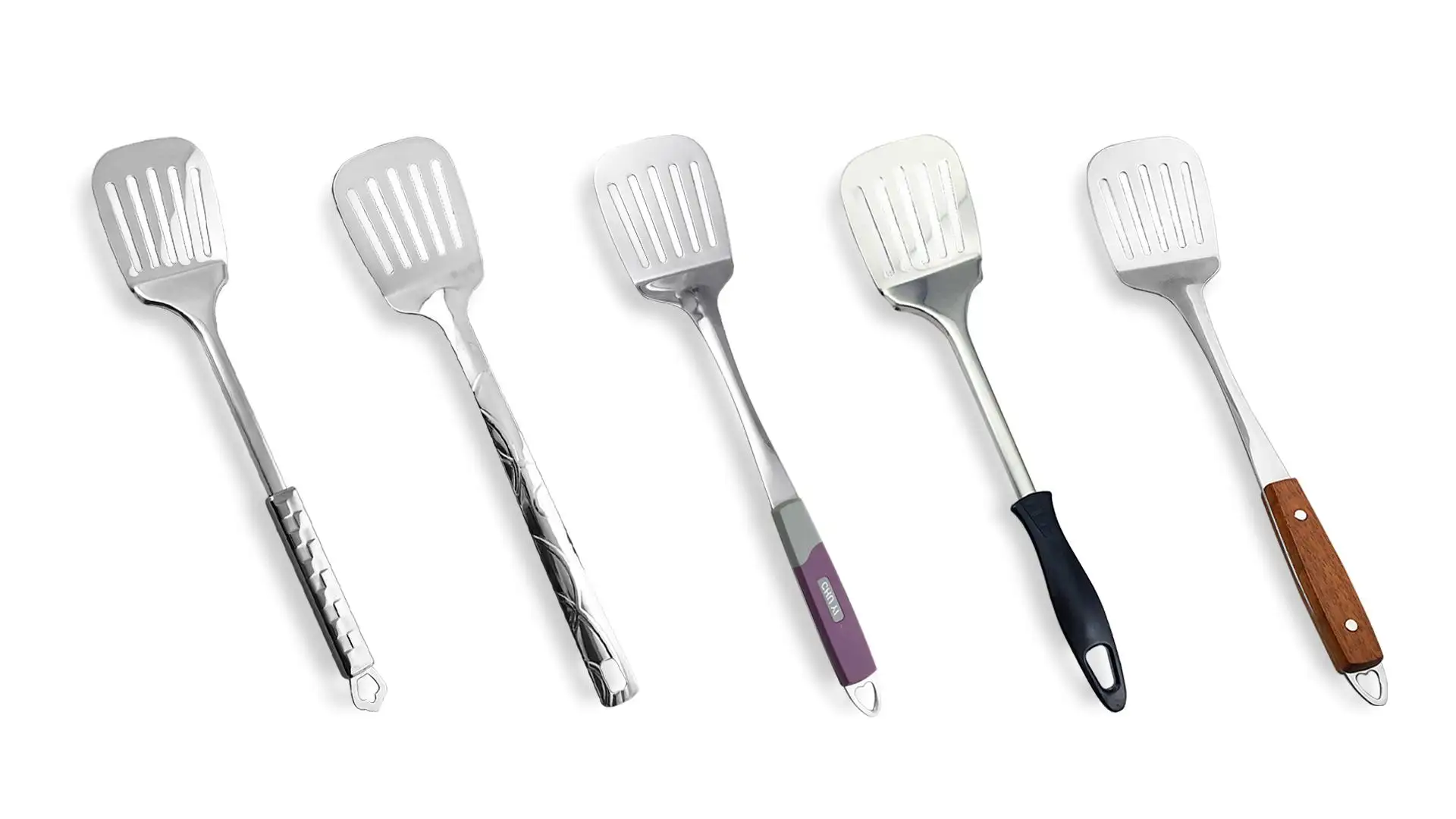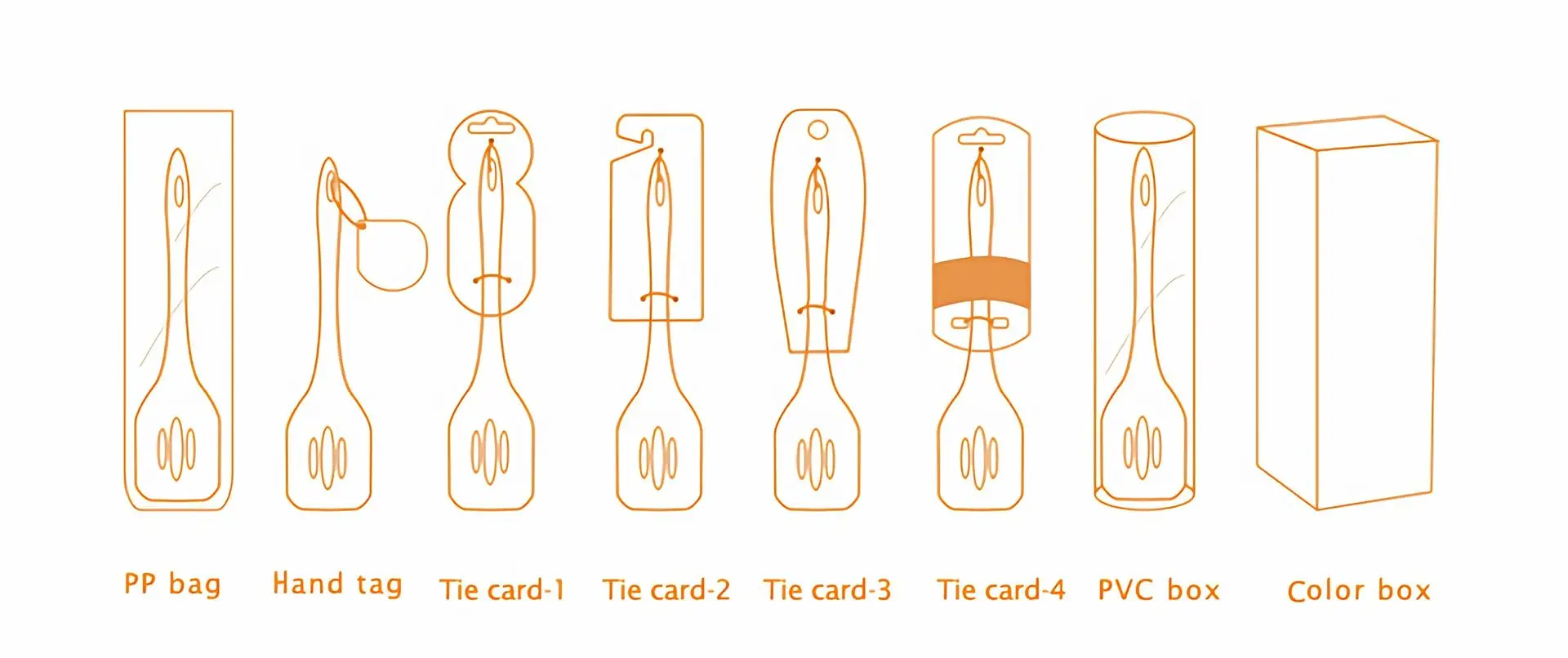Bamboo Kitchen Utensils Pros and Cons
In recent years, bamboo kitchen utensils have become a popular alternative for those who favor natural materials in their kitchen, following traditional wooden utensils. With a unique combination of strength and lightness, bamboo cooking utensils are eco-friendly, and stronger than traditional wooden kitchen utensils, making them a sustainable and safe product for everyday cooking tasks. If you’re curious about bamboo kitchen utensils and wondering if it’s time to try these kitchen tools with the freshness of nature, follow along as we unveil their mysteries together in this post!
What Are Bamboo Kitchen Utensils?
Bamboo kitchen utensils are kitchen tools crafted from bamboo, a fast-growing and renewable resource, unlike wood takes years to grow. Meanwhile, it grows with minimal nutrients and doesn’t need to be replanted after harvesting, as the root system remains intact. These natural properties make bamboo an attractive option for eco-conscious consumers looking to minimize their environmental footprint.
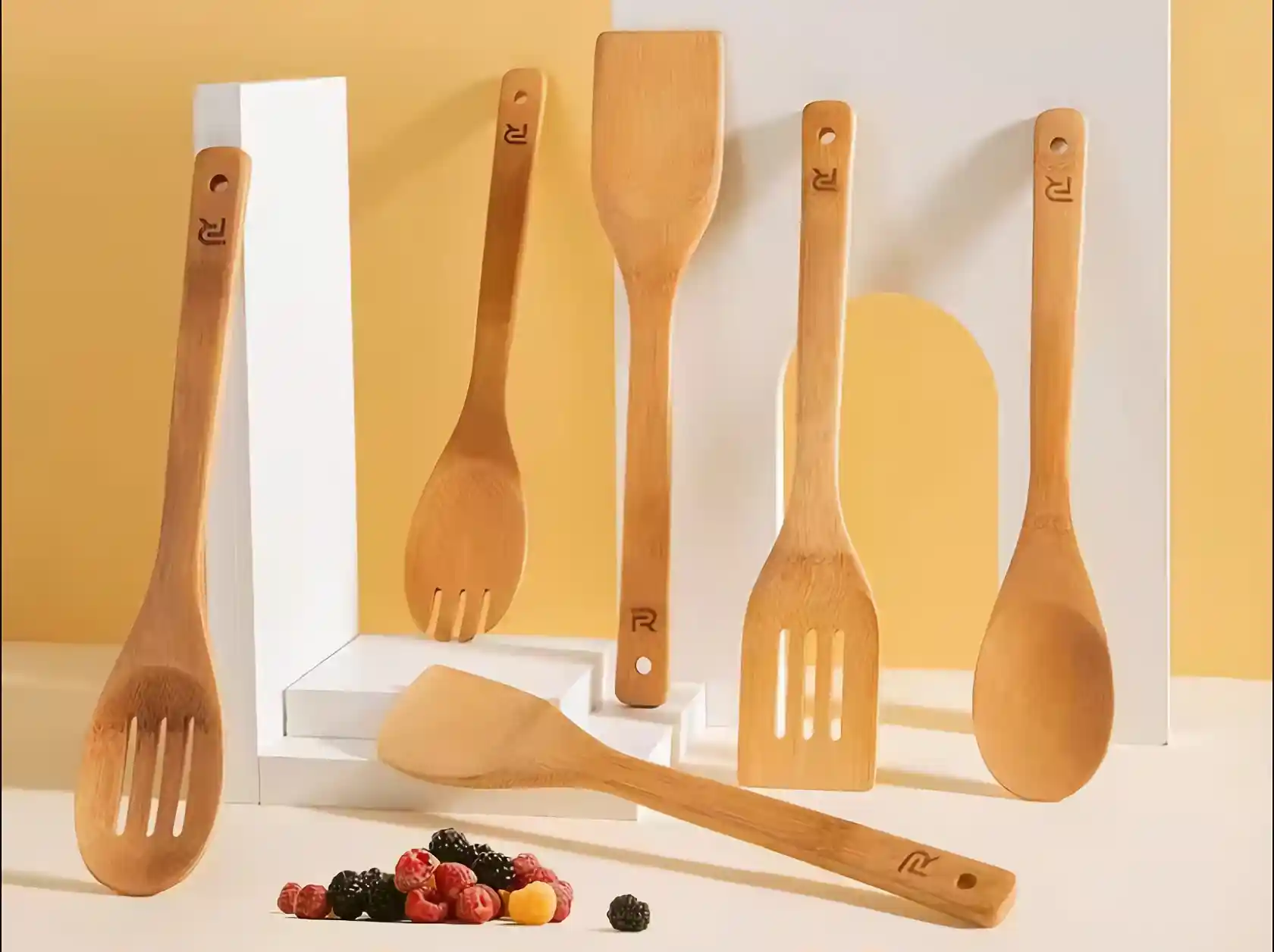
Benefits of Bamboo Kitchen Utensils
1. Sustainability
One of the most significant advantages of bamboo kitchen utensils is their sustainability. Bamboo is one of the fastest-growing plants in the world, capable of reaching full maturity in just three to five years. Unlike traditional hardwoods, which can take decades to grow, bamboo’s rapid growth makes it a highly renewable resource. Additionally, bamboo cultivation requires minimal pesticides and fertilizers, which further reduces its environmental impact.
2. Natural Antimicrobial Properties
Bamboo has natural antimicrobial properties, which can help resist bacteria and odors. While it’s not a substitute for proper cleaning, this characteristic can contribute to a more hygienic cooking environment. Bamboo’s ability to stay relatively free from harmful microorganisms makes it a preferable choice for many home cooks.
3. Eco-Friendly Manufacturing
Bamboo kitchen utensils generally involve less energy-intensive manufacturing processes compared to plastic or metal alternatives. The production of bamboo cooking utensils typically results in fewer carbon emissions, making them a greener choice for environmentally conscious consumers. Furthermore, many bamboo kitchen utensils are produced using sustainable practices, such as low-impact adhesives and finishes.
4. Gentle on Cookware
Bamboo kitchen utensils are non-abrasive, making them ideal for use with non-stick cookware. Unlike metal kitchen utensils, which can scratch and damage the surface of non-stick pans, bamboo cooking utensils glide smoothly, preserving the integrity of your cookware. This gentle nature also makes bamboo kitchen utensils suitable for use with delicate foods and finishes.
5. Durability
Despite being lightweight, bamboo is remarkably strong and durable. Bamboo fibers are tightly packed, giving it a toughness that can rival even some hardwoods. This durability means bamboo kitchen utensils can withstand the rigors of everyday cooking without splintering or breaking. When properly cared for, bamboo kitchen utensils can last for many years, offering good value for your money.
6. Aesthetic Appeal
Bamboo kitchen utensils bring a warm, natural look to your kitchen. Their light, honey-colored finish adds an organic touch that blends well with various kitchen styles, from rustic to modern. Many people appreciate the aesthetic value of bamboo, which can enhance the overall ambiance of your cooking space.
7. Affordability
Compared to high-end wooden kitchen utensils or specialty kitchen tools, bamboo kitchen utensils are often more affordable. This cost-effectiveness makes them accessible to a broad range of consumers while still offering quality performance. Many bamboo kitchen utensil sets come at a reasonable price point, allowing you to upgrade your kitchen tools without breaking the bank.
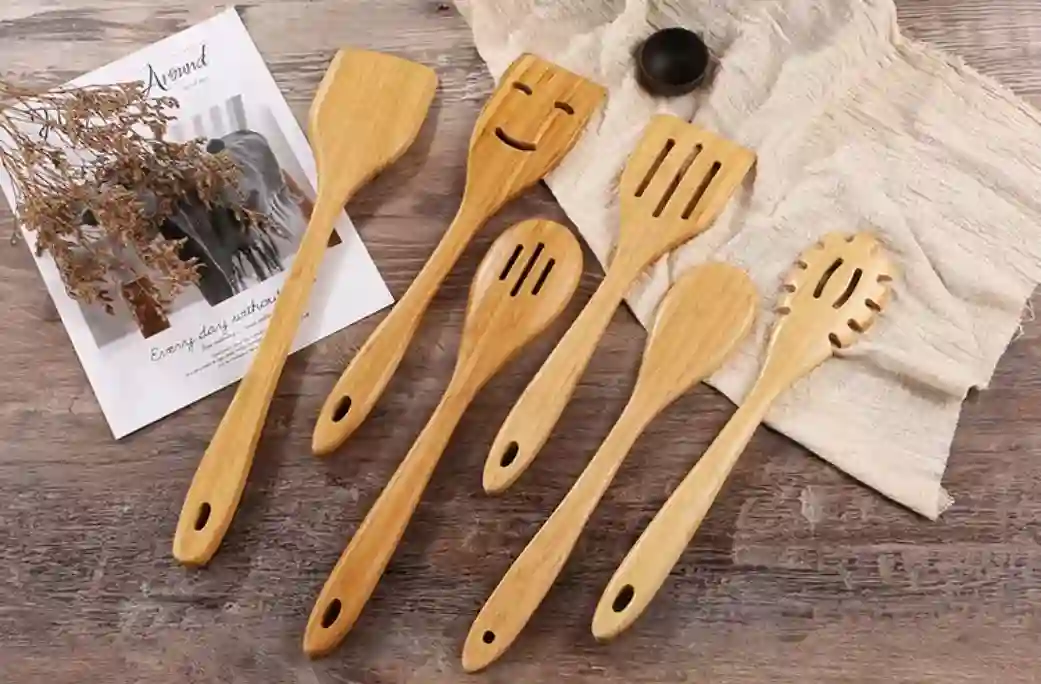
Disadvantages of Bamboo Kitchen Utensils
1. Maintenance Requirements
While bamboo kitchen utensils are durable, they do require regular maintenance to keep them in optimal condition. Bamboo cooking utensils are susceptible to drying out and cracking if not properly cared for. To maintain their longevity, it’s essential to wash bamboo kitchen utensils by hand rather than in the dishwasher. Additionally, periodic oiling with a food-safe mineral oil can help prevent drying and preserve the utensil’s appearance.
2. Limited Heat Resistance
Bamboo kitchen utensils are not as heat-resistant as some metal or silicone alternatives. Prolonged exposure to high temperatures can lead to warping or damage. Although bamboo kitchen utensils can generally handle normal cooking temperatures, they should not be left resting in a hot pan or exposed to extreme heat. This limitation might not be ideal for every cooking scenario.
3. Variability in Quality
The quality of bamboo kitchen utensils can vary significantly between manufacturers. Some products may be made from lower-grade bamboo or have inconsistent construction, leading to issues such as splintering or warping. It’s crucial to purchase bamboo kitchen utensils from reputable brands to ensure you’re getting a product that meets high standards of craftsmanship and material quality.
4. Environmental Impact of Production
While bamboo is a sustainable resource, the environmental impact of its production can still be a concern. The processing of bamboo into utensils may involve chemicals or adhesives that can have negative environmental effects. Additionally, if bamboo is not sourced responsibly, it can contribute to deforestation and habitat loss. Opting for products certified by reputable environmental organizations can help mitigate these concerns.
5. Limited Variety
Compared to plastic or metal kitchen utensils, the range of bamboo kitchen utensils might be somewhat limited. While you can find a good selection of basic tools like spatulas and spoons, more specialized utensils might not be as readily available. This limitation could be a drawback if you’re looking for specific types of kitchen tools.
6. Potential for Staining
Bamboo is porous and can absorb stains from strongly colored foods or ingredients. Over time, this can affect the appearance of the kitchen utensils. While this doesn’t necessarily impact their functionality, it may detract from their aesthetic appeal. Regular cleaning and prompt washing after use can help minimize staining and maintain the kitchen utensils’ appearance.
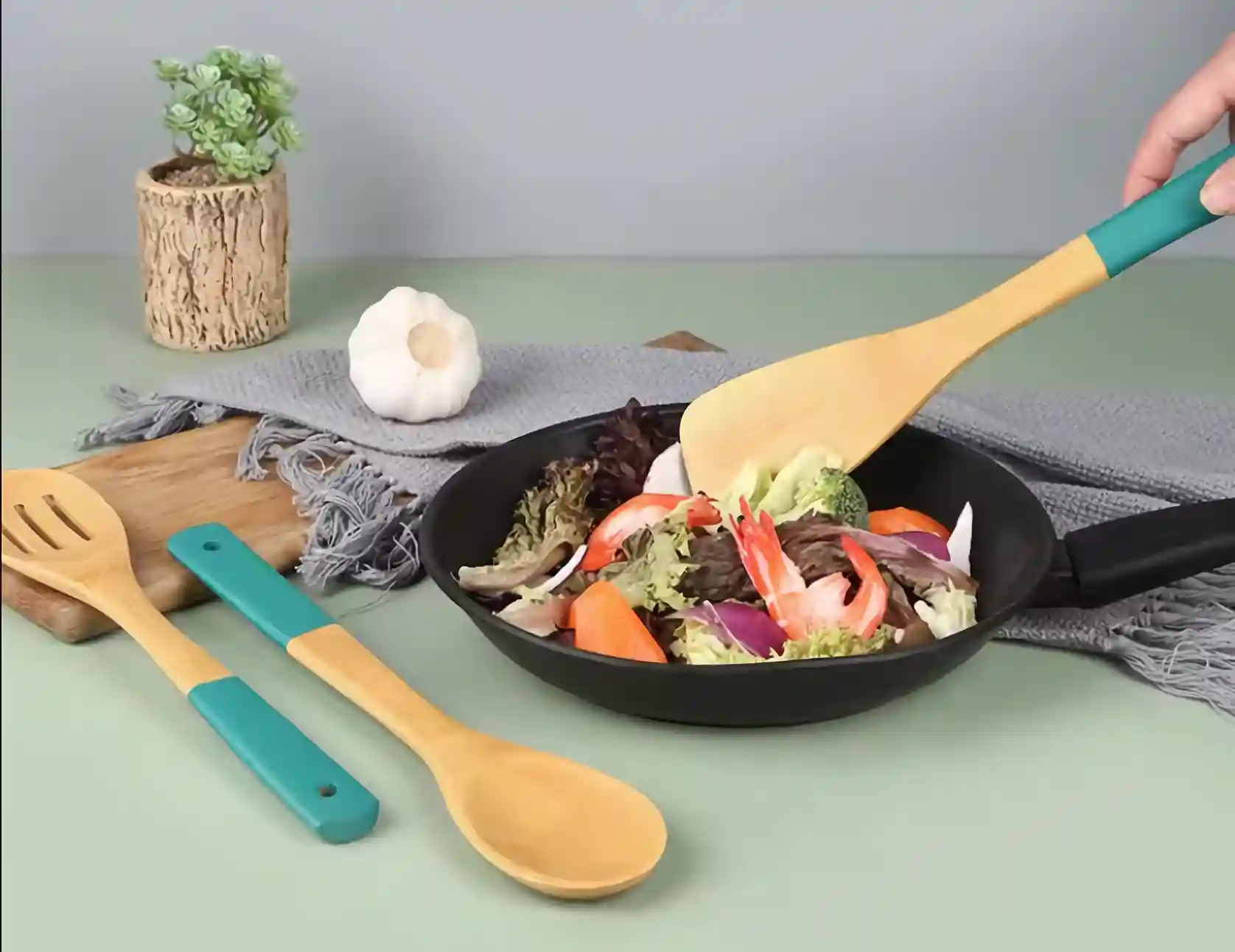
Wood VS. Bamboo Kitchen Utensils
When choosing between bamboo and traditional wooden cooking utensils, it’s helpful to consider the unique attributes and benefits of each material. Here’s a detailed comparison to guide your decision:
| Characteristics | Bamboo | Wood |
|---|---|---|
| Material | Bamboo is technically a grass rather than a wood, which contributes to its lightweight and strong properties. It has a fibrous structure that makes it durable yet flexible. Bamboo’s natural properties also give it some inherent resistance to bacteria and odors. | Traditional wooden kitchen utensils are made from various types of hardwoods such as maple, cherry, and walnut. Wood is known for its density and strength, which can make wooden kitchen utensils heavier and potentially more robust than bamboo. Wood can also have different textures and finishes, adding to its aesthetic versatility. |
| Sustainability | Bamboo is highly renewable and grows rapidly, making it a more sustainable choice compared to traditional hardwoods. Its cultivation requires fewer resources and less impact on the environment. However, the overall environmental impact depends on how the bamboo is processed and sourced. | Hardwood trees take decades to mature, making them a less sustainable option compared to bamboo. The logging of hardwood forests can contribute to deforestation and habitat loss, though some manufacturers use responsibly sourced or reclaimed wood to mitigate these issues. |
| Durability and Maintenance | Bamboo kitchen utensils are durable and resistant to splintering, but they require careful maintenance to avoid drying out and cracking. They should be hand-washed and periodically oiled to maintain their condition. | Wooden kitchen utensils are also durable but can be prone to scratches and dents. Like bamboo, they require hand washing and occasional conditioning with mineral oil or beeswax to keep them in good shape. Some woods may be more resistant to stains and odors than bamboo. |
| Heat Resistance | Bamboo kitchen utensils have lower heat resistance compared to metal or silicone alternatives. They can warp or get damaged if exposed to high temperatures for prolonged periods. | Wooden kitchen utensils generally handle moderate heat well but can be affected by extreme temperatures. Over time, excessive heat can cause wood to crack or become discolored. It’s best to use wooden kitchen utensils within reasonable temperature limits. |
| Environmental Impact | Bamboo’s environmental footprint is generally lower due to its rapid growth and minimal use of chemicals in cultivation. Nonetheless, the overall impact depends on responsible sourcing and processing practices. | The environmental impact of wooden kitchen utensils can be higher, especially if sourced from unsustainable logging practices. Choosing utensils made from reclaimed or responsibly sourced wood can help reduce this impact. |
| Cost | Bamboo kitchen utensils are generally more affordable than high-end wooden options. Their cost-effectiveness makes them accessible for many consumers looking to enhance their kitchen without a significant investment. | High-quality wooden kitchen utensils can be more expensive due to the cost of the raw materials and the craftsmanship involved. However, they can offer a premium feel and longer lifespan if properly maintained. |
| Aesthetic Appeal | Bamboo kitchen utensils offer a light, natural look with a warm honey-colored finish. They can add an organic touch to your kitchen decor and blend well with various styles. | Wooden kitchen utensils come in a variety of finishes and can add a classic or rustic appeal to your kitchen. Different types of wood can offer unique colors and grains, providing a range of aesthetic options. |
How to Care for Bamboo Kitchen Utensils
Proper care is essential to ensure the longevity and performance of your bamboo kitchen utensils. Here are some tips to help you maintain your bamboo cooking utensils:
Hand Wash Only: Avoid placing bamboo kitchen utensils in the dishwasher. Instead, wash them by hand using mild soap and warm water. After washing, dry them thoroughly with a clean cloth.
Avoid Soaking: Prolonged soaking can cause bamboo to swell and crack. Clean your bamboo kitchen utensils promptly after use and avoid leaving them submerged in water.
Oiling: Regularly oil your bamboo kitchen utensils with food-safe mineral oil to prevent them from drying out and becoming brittle. Apply the oil with a soft cloth and let it absorb before wiping off any excess.
Store Properly: Store bamboo kitchen utensils in a dry place away from direct sunlight. Avoid exposing them to extreme temperatures or humidity.
Inspect Regularly: Check your bamboo kitchen utensils for any signs of damage, such as cracks or splinters. Discontinue use if you notice significant wear and replace them as needed.
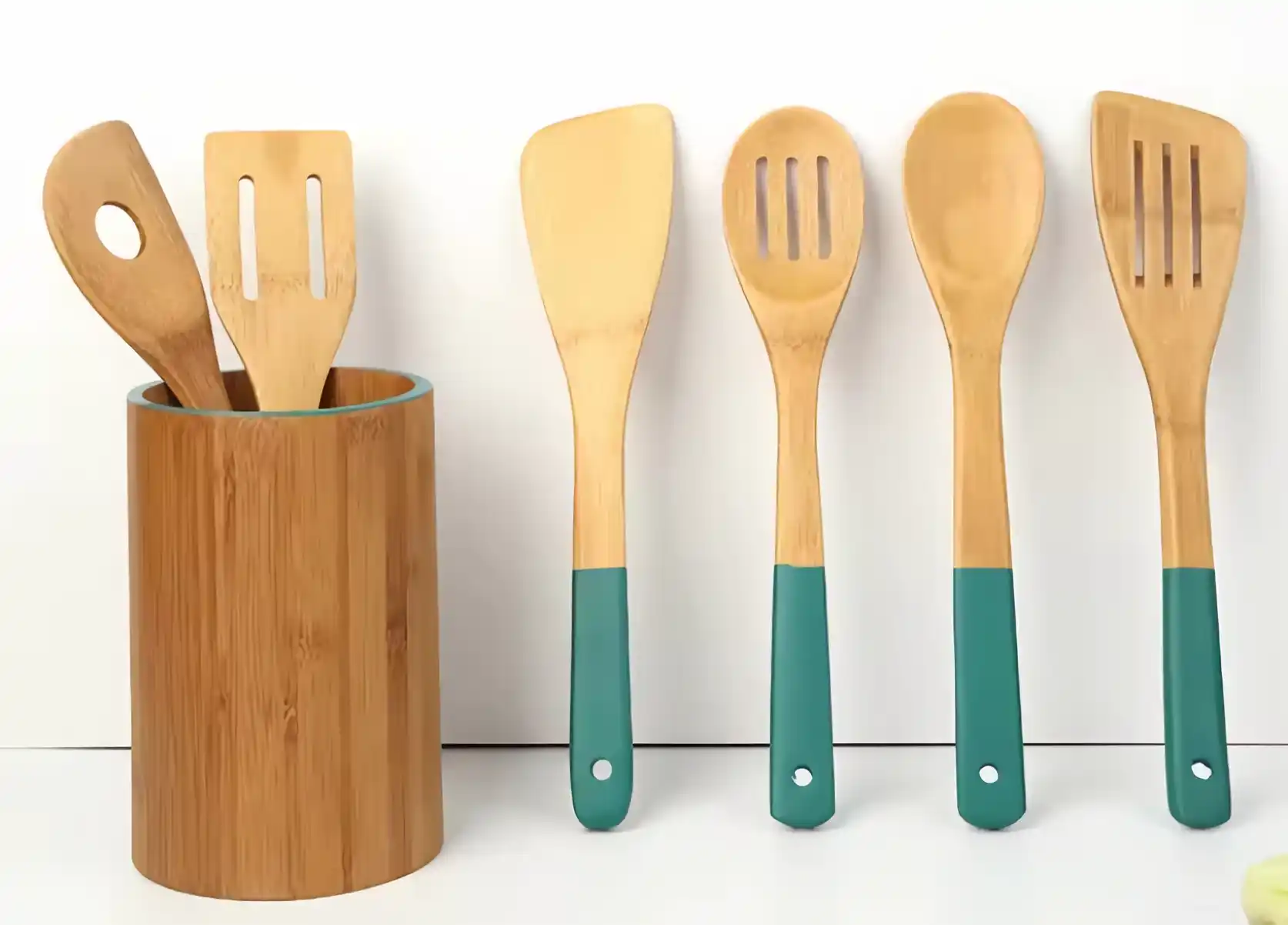
Conclusion
Bamboo kitchen utensils offer a range of benefits, from their sustainability and durability to their gentle nature and aesthetic appeal. They are an excellent choice for those looking to make an environmentally friendly choice without compromising on quality. However, they do come with certain drawbacks, such as maintenance requirements and limited heat resistance.
By understanding both the pros and cons of bamboo kitchen utensils, you can make a well-informed decision that aligns with your cooking needs and environmental values. Whether you choose bamboo for its ecological benefits, aesthetic appeal, or functional advantages, proper care will help you get the most out of your kitchen tools and enjoy a more sustainable cooking experience.

